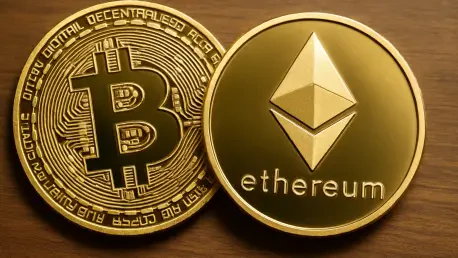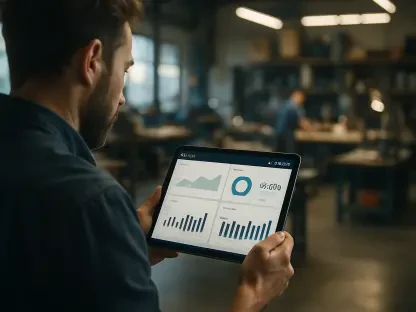Diving into the dynamic world of cryptocurrency derivatives, I’m thrilled to sit down with Priya Jaiswal, a distinguished expert in Banking, Business, and Finance. With her deep knowledge of market analysis, portfolio management, and international business trends, Priya is the perfect guide to unpack the latest innovation from Cboe Futures Exchange. On December 15, 2025, Cboe is set to launch trading in Continuous Futures for Bitcoin and Ether, a groundbreaking move designed to offer long-term, perpetual-style exposure to digital assets within a U.S.-regulated framework. In this conversation, we’ll explore the mechanics of these new products, their benefits for investors, and how they’re poised to reshape access to crypto markets while prioritizing transparency and risk management.
Can you walk us through what Cboe Futures Exchange is launching on December 15, 2025, and what makes these Bitcoin and Ether Continuous Futures unique?
Absolutely. Cboe Futures Exchange is introducing two new products: Cboe Bitcoin Continuous Futures, or PBT, and Cboe Ether Continuous Futures, known as PET. These are designed to give investors long-term exposure to Bitcoin and Ether with a structure that mimics perpetual futures, which have traditionally been traded offshore. What sets them apart is their 10-year expiration at listing combined with a daily cash adjustment. This setup effectively eliminates the need for investors to roll over positions periodically, as you’d have to with traditional futures, making it a more seamless way to maintain exposure to these digital assets.
What motivated Cboe to bring Continuous Futures for Bitcoin and Ether into the market at this time?
The primary driver is meeting a growing demand for efficient, long-term crypto exposure, especially among institutional investors. Historically, perpetual futures have been traded on offshore platforms, which often lack the regulatory oversight and transparency that U.S. markets provide. By offering these products in a regulated environment, Cboe is filling a critical gap, making it easier and safer for investors to engage with digital assets while benefiting from the structure and protections of a U.S.-based exchange. It’s about accessibility and trust.
How do these Continuous Futures actually function for someone looking to invest?
These futures are structured to be user-friendly for long-term exposure. With a 10-year expiration, they’re listed far out into the future, and there’s a daily cash adjustment called the Funding Amount applied to open positions. This mechanism helps keep the futures price aligned with the underlying Bitcoin or Ether price, creating a perpetual-style exposure. Essentially, investors don’t have to worry about rolling their contracts every few months—they can hold a position for as long as they want without the operational hassle, mimicking the ease of spot trading but with the benefits of a futures contract.
What are some of the key advantages these Continuous Futures bring to traders and investors?
There are several benefits that make these products appealing. First, they offer capital efficiency, meaning investors can gain leveraged exposure to Bitcoin and Ether without tying up as much capital as they might in spot markets. They’re also great for volatility management, allowing traders to hedge against price swings. Additionally, these futures support tactical trading strategies and enable short positions, which are crucial for managing risk or betting on price declines. It’s a versatile toolset for both speculative and protective strategies in a volatile asset class like crypto.
How is Cboe ensuring that these new products are safe and transparent for market participants?
Safety and transparency are cornerstones of this launch. The Continuous Futures are centrally cleared through Cboe Clear U.S., LLC, which is regulated by the CFTC. This clearing process significantly reduces counterparty risk by acting as an intermediary between buyers and sellers. On top of that, margin requirements are clearly defined and compliant with regulatory standards, and there’s potential for cross-margining with other Cboe products. This means investors might be able to offset margin needs across different positions, optimizing their capital further. It’s all about creating a controlled, reliable trading environment.
Can you explain the pricing mechanism behind these futures and how it stays tied to the actual value of Bitcoin and Ether?
Certainly. The pricing for PBT and PET futures is based on the Cboe Kaiko Real-Time Rate, which tracks the underlying digital asset’s price in real time using robust data methodologies. To ensure the futures price doesn’t drift too far from the spot price, there’s a daily Funding Amount applied to open positions. This cash adjustment incentivizes price convergence, so if the futures are trading at a premium or discount, this mechanism helps bring them back in line. It’s a clever way to maintain alignment without constant manual intervention from traders.
What does the trading schedule look like for these Continuous Futures, and how does it impact accessibility for investors?
These futures will trade on a 23×5 basis, which means they’re available from Sunday at 6 p.m. Eastern Time through Friday at 5 p.m. Eastern Time. That’s 23 hours a day, five days a week, offering near-constant access for traders. It’s a huge plus for accessibility, especially in the crypto space where markets never sleep. The only downtime is a brief window over the weekend, which allows for system maintenance and ensures reliability during peak trading times.
Looking ahead, what’s your forecast for the impact of these Continuous Futures on the broader cryptocurrency and derivatives markets?
I think we’re looking at a potential game-changer. By bringing perpetual-style futures into a U.S.-regulated space, Cboe is likely to attract a wave of institutional money that’s been hesitant to dive into crypto due to regulatory concerns or operational complexities. This could increase liquidity and stabilize pricing in the crypto derivatives market over time. Moreover, it sets a precedent for other exchanges to innovate within regulated frameworks, potentially bridging the gap between traditional finance and digital assets. I expect we’ll see growing adoption and perhaps even more tailored products as the market matures.









